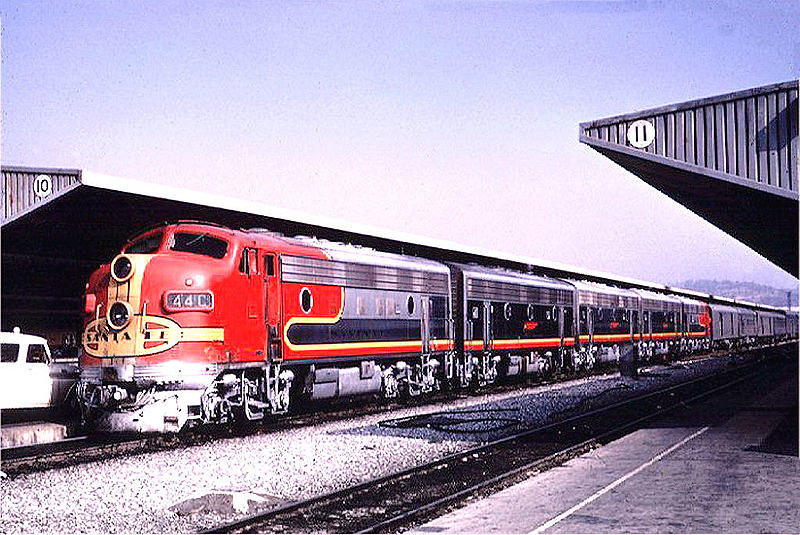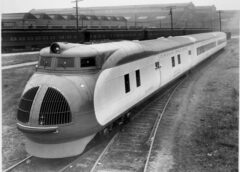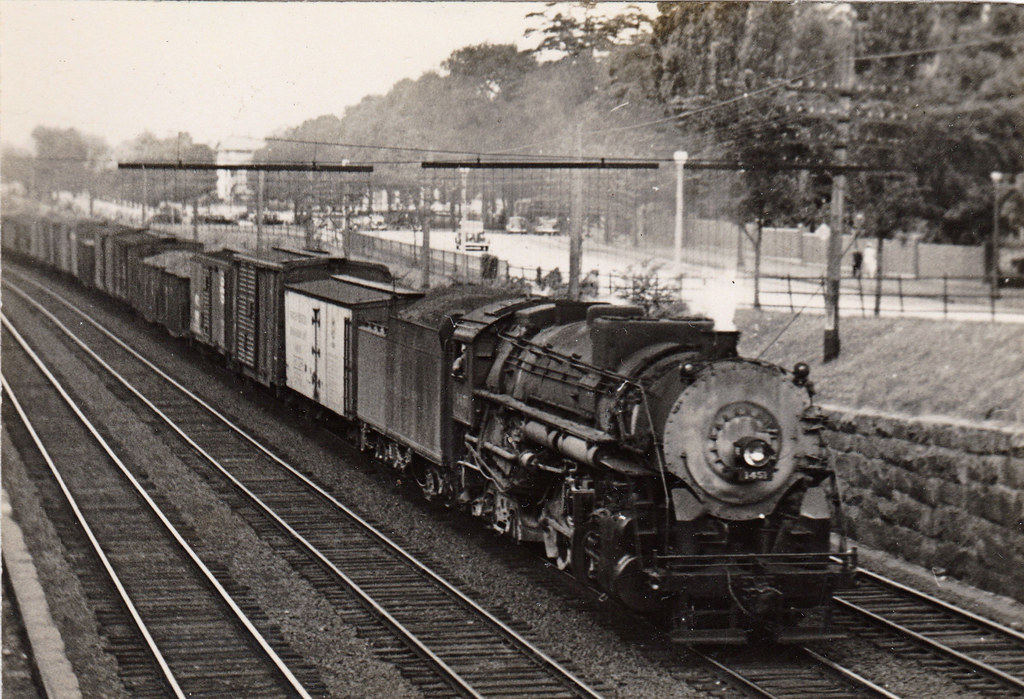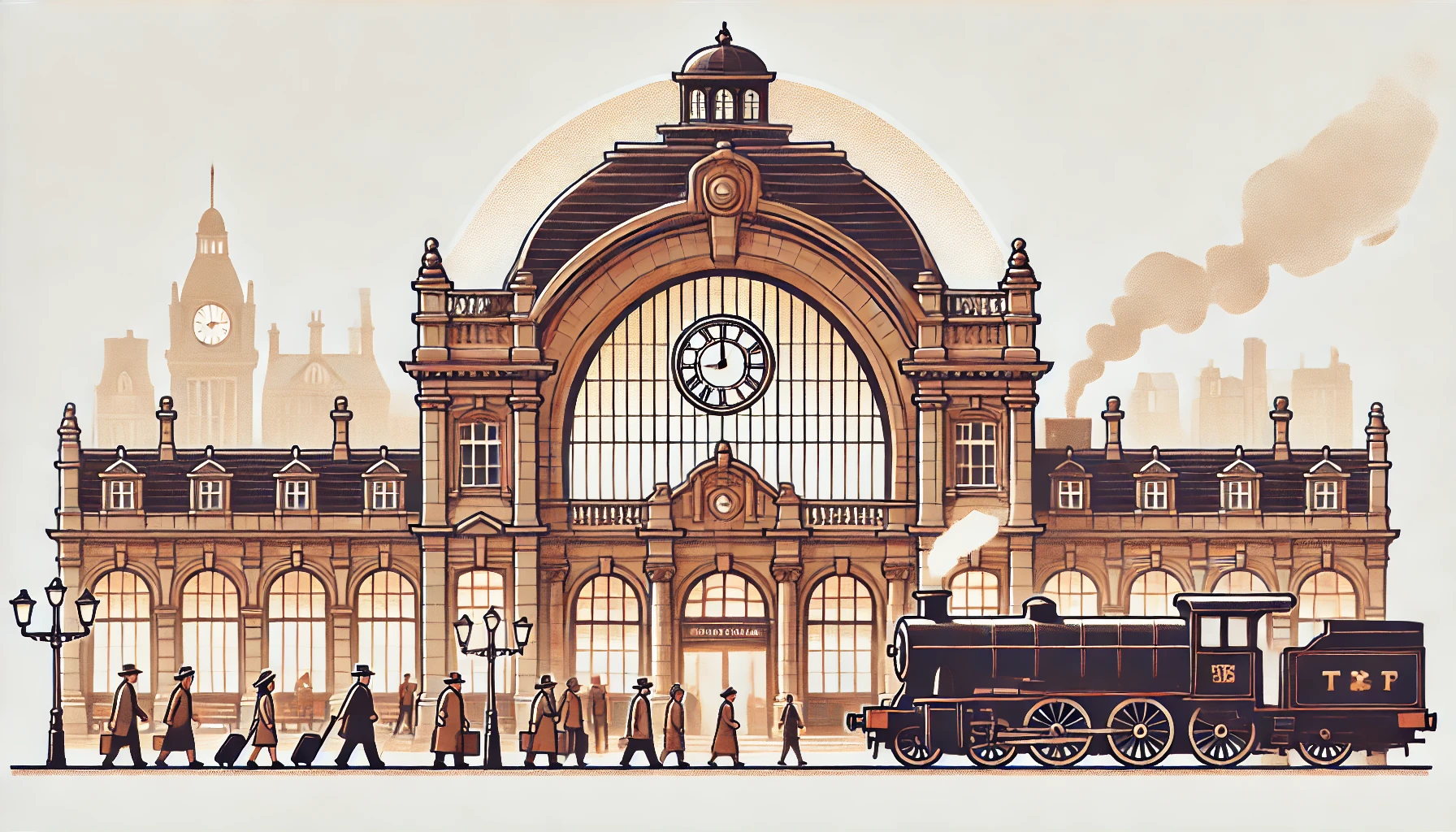Table of Contents
Quick Facts
| Year Founded | 1859 |
| Year of Demise | 1995, merged with Burlington Northern |
| Total Track Mileage | 13,000 |
| Number of States was Located In | Nine |
| Headquarters | Chicago Il. |
History
The Santa Fe Railroad, also known as the Atchison, Topeka and Santa Fe Railway (AT&SF), was one of the major railroads in the United States. Its history stretches back to the mid-19th century, and it played a crucial role in the development of the American West. Let’s dive into the fascinating story of the Santa Fe Railroad.
Formation and Early Years: The Santa Fe Railroad was founded on February 11, 1859, in Topeka, Kansas. The initial purpose of the railroad was to connect the town of Atchison, Kansas, with Santa Fe, New Mexico, thus providing a direct route to the Pacific Coast. The railroad was named after the two cities it aimed to connect.
The key figures involved in the formation of the Santa Fe Railroad were Cyrus K. Holliday, an entrepreneur and politician, and Henry Strong, a successful New York businessman. Holliday, who became the railroad’s first president, was instrumental in securing financial backing and government support for the project.
Expansion and Network: Over the years, the Santa Fe Railroad expanded its network extensively, becoming one of the largest and most profitable railroads in the United States. Its tracks eventually reached across eight states, including Kansas, Missouri, Oklahoma, Texas, Colorado, New Mexico, Arizona, and California.
The vast system of the Santa Fe Railroad covered a distance of approximately 13,000 miles, connecting major cities such as Chicago, Los Angeles, San Francisco, and Denver. The railroad played a vital role in opening up the American West to settlement, commerce, and tourism.
Denver and Rio Grande Railroad: The Denver and Rio Grande Railroad was a rival railroad that operated in the western United States. In the late 19th century, a competition arose between the Santa Fe and the Denver and Rio Grande to secure routes through the Rocky Mountains. This rivalry led to various disputes, including legal battles and instances of track sabotage.
The issue between the Santa Fe and the Denver and Rio Grande was eventually settled through compromise and negotiation. In 1929, the two railroads reached an agreement that allowed the Santa Fe to use the tracks of the Denver and Rio Grande in exchange for financial compensation.
Attempted Merger with Southern Pacific: In the 1980s, the Santa Fe Railroad entered into negotiations for a potential merger with the Southern Pacific Railroad. The merger was intended to create a transcontinental railroad system, connecting the Pacific Coast with the Gulf of Mexico. However, the merger faced significant regulatory and antitrust hurdles and was ultimately abandoned in 1989.
Merger with the Burlington Northern: The Santa Fe Railroad’s history took a significant turn in 1995 when it merged with the Burlington Northern Railroad to form the Burlington Northern Santa Fe Corporation (BNSF). The merger created one of the largest railroads in North America, spanning a network of approximately 33,500 miles across 28 states.
In conclusion, the Santa Fe Railroad was a monumental force in shaping the development of the American West. From its humble beginnings in Kansas to its vast network spanning multiple states, the Santa Fe Railroad played a crucial role in connecting communities, fostering commerce, and promoting tourism. Although it eventually merged with the Burlington Northern, its legacy lives on through surviving steam locomotives and the Amtrak Southwest Chief, allowing passengers to experience a glimpse of the railroad’s storied history while traversing its historic routes.
Major passenger trains
Main Passenger Trains: The Santa Fe Railroad operated several iconic passenger trains known for their luxury and comfort. The most famous of these was the Santa Fe Super Chief, inaugurated in 1936. The Super Chief offered top-notch amenities, including luxurious sleeping and dining cars, and became synonymous with luxury rail travel in the United States.
Other notable Santa Fe passenger trains included the Chief, the El Capitan, and the San Francisco Chief. These trains provided transportation for both business travelers and tourists, offering scenic views of the American Southwest along their routes.
Surviving Steam Locomotives
Santa Fe was one railroad that was not shy about preserving their steam locomotives. There are no less than 59 surviving steam locomotives scattered about the country. Check out this link for a list:
https://www.steamlocomotive.com/survivors/search.php?railroad=AT%26SF&country=USA
Three of these locomotives are listed as operational:
| Locomotive | Type | Builder | Location |
| 3415 | 4-6-2 | Baldwin 1919 | Abilene & Smoky Valley Railroad, Abilene, KS |
| 2926 | 4-8-4 | Baldwin 1944 | New Mexico Steam Locomotive and Railroad Historical Society, Albuquerque, NM |
| 3751 | 4-8-4 | Baldwin 1927 | Amtrak/Redondo Junction Shops, Vernon, CA |
In addition there are many surviving diesel locomotives. BNSF has several heritage Santa Fe units on their roster that are still in their original paint schemes, although fading.
Riding the Line Today

| Amtrak Train Name | Southwest Chief |
| End Point Stations | Chicago, IL, Los Angeles CA |
| Closest Airport to Chicago Union Station | Midway, Next O’Hare |
| Closest Airport to Los Angeles Union Station | Hawthorn Airport, Next is LAX |
| Time train leaves Chicago | 2:50 PM Central time |
| Time train leaves Los Angeles | 5:55 PM Pacific Time |
| Number of hours of travel | 44 hours |
| Cost of a Coach Seat | $146.00 |
| Other services and upgrades available | Roomette Bedroom Bedroom Suite Family Rom Accessible Bedroom Traditional dining |
Riding the Line Today via Amtrak: While the Santa Fe Railroad as an independent entity no longer exists, many of its routes are still in use today, operated by Amtrak, the national passenger railroad of the United States. Amtrak’s Southwest Chief follows a significant portion of the original Santa Fe Railroad route, providing scenic and historic train travel between Chicago and Los Angeles.

Passengers riding the Southwest Chief can experience breathtaking views of the American West, including the rugged landscapes of the Rockies, vast desert vistas, and iconic landmarks such as the Grand Canyon. The route passes through several states, including Illinois, Missouri, Kansas, Colorado, New Mexico, Arizona, and California, showcasing the diversity and beauty of the region.

Amtrak has made efforts to preserve the spirit of the Santa Fe Railroad by incorporating elements of its heritage into the Southwest Chief service. For example, some of the train cars feature historical names like “Superliner” and “Chief.” This connection to the past allows passengers to appreciate the legacy of the Santa Fe Railroad while enjoying modern train travel.
The other way you can ride Ex-Santa Fe rails is to rid the Grand Canyon Railroad. It makes trips from Williams AZ, to the Canyon rim. Sometmes the train is pulled by Steam.



















